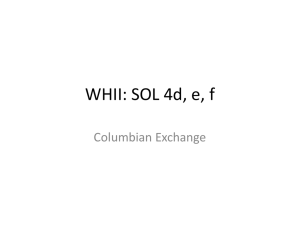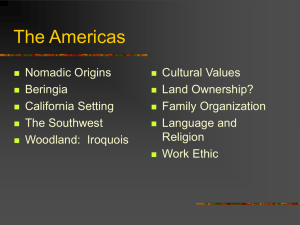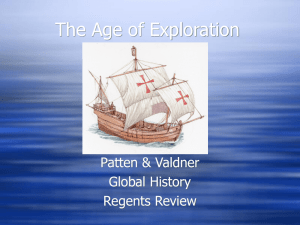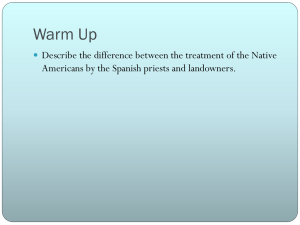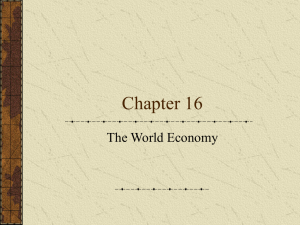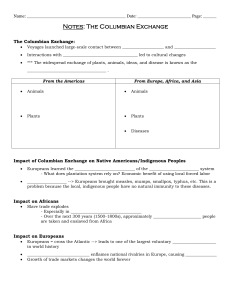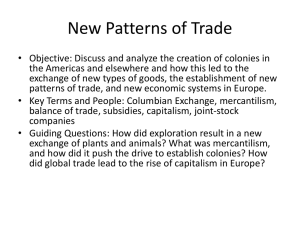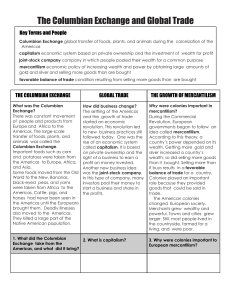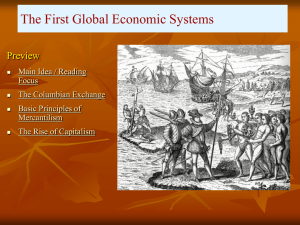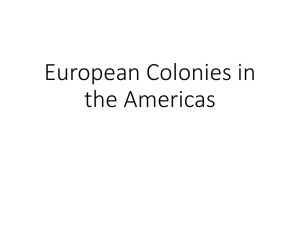4/22 Focus
advertisement
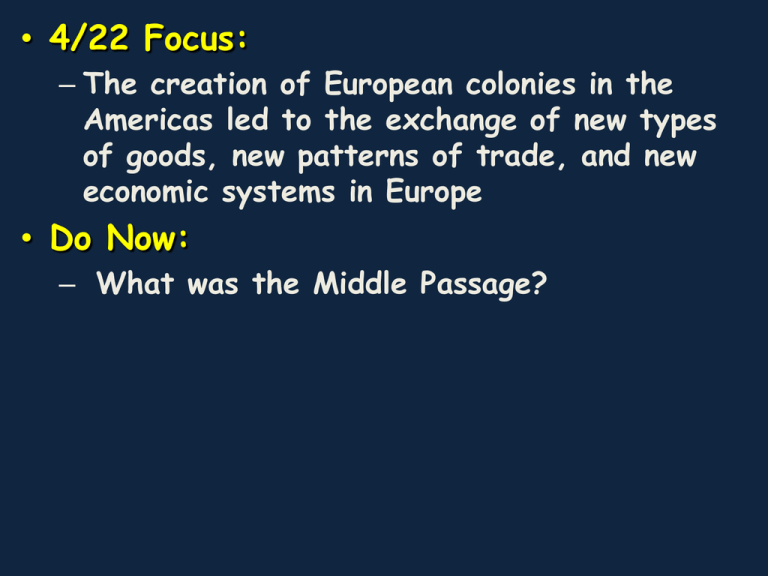
• 4/22 Focus: – The creation of European colonies in the Americas led to the exchange of new types of goods, new patterns of trade, and new economic systems in Europe • Do Now: – What was the Middle Passage? Columbian Exchange • The exchange of plants, animals, and diseases between Europe, Africa, and the Americas Effects of the Columbian Exchange • Introduction of new crops from the Americas to Europe, Africa, and Asia led to population growth Effects of the Columbian Exchange • Increased cultural diffusion – Europeans were influenced by Native American foods as well as African farming methods, cooking styles, and music – Spread of European languages – Spread of Christianity Effects of the Columbian Exchange • The combination of new products and ideas promoted economic growth in Europe European Compete for Colonies • The success of the Spanish colonization increased European interest in the Americas – French establish colonies in Canada – Dutch establish colonies along the Hudson River – British colonize east coast of U.S. Mercantilism • An economic system in which colonies exist for the benefit of the colonial power – Europeans looked at their colonies as possessions that existed for their benefit Principles of Mercantilism • Might of a country depends on gaining surpluses of gold and silver Principles of Mercantilism • A main goal is the creation of a favorable balance of trade – Exporting more goods than you import Principles of Mercantilism • The purpose of colonies: – Ship raw materials to the “mother country” (colonial power) – Buy finished goods from the colonial power • Growth of Capitalism in Europe • Increased trade with colonies encouraged the development of capitalism in Europe. – People invested money in companies in hopes of making a profit – Joint stock companies formed to finance overseas expedition – Led to the growth of the middle class in Europe. • Closure • Define the term Columbian Exchange. • What is mercantilism? • What was one goal of mercantilism?
